The story of the making of Naked as Nature Intended and its subsequent history has been rigorously chronicled by our illustrious editor, thanks to his enthusiasm for the subject and his priceless Pamela Green archives (which should be saved for the nation). However, as a film historian, the one area of knowledge missing from our story is information on the musical score of this movie — a state of affairs I have spent quite a few years attempting to rectify.
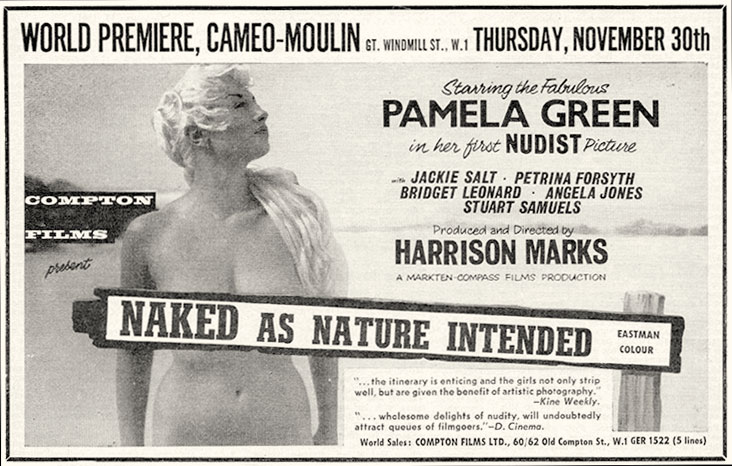
All we have to go on is the infuriatingly unhelpful opening title credit “Music by Boosey & Hawkes and C.Brull” which means — library music! For the uninitiated, that’s music supplied by publishers, who in addition to marketing songs and sheet music and promoting records, also have a library of specially commissioned pieces of music to suit all possible moods, for the background scores of films and other media, that might not want, or need, an (expensive) composer.
The business of library music has remained one of the great underground secrets of the film industry since the 1930s, and only the trade was supposed to know about it, (I personally have spent more than half my lifetime, just trying to track down catalogues, let alone the discs!) Earliest on the scene were DeWolfe publishers who were supplying ‘mood music’ in sheet music form to silent cinemas in the 1920s, But on record, one of the earliest pioneers were Boosey and Hawkes, putting out 78s from around 1937/8 onwards.
Other publishers followed suit, the big players like Chappell and Francis Day & Hunter dominating the business in the 1940s and a slew of smaller labels popping up in the post-war years. Amongst them Charles Brull — a spinoff of Karl Brull the Austrian publishers, who apparently retrenched to London in the ’50s. Brull, or Harmonic as their label was usually known, employed any number of the great light music composers of the period including Mischa Spoliansky, Hans May, Wilfred Burns, Allan Gray and many others, from popular songwriters to major film composers. Boosey and Hawkes were equally creative with their choices of composers but struck gold with one, in particular, the great Trevor Duncan, best remembered today for his theme to TVs Doctor Finlay’s Casebook (itself a Boosey library piece) — and at one point in the early 1950s, the composer of more than a quarter of all Boosey’s musical output.
What led Harrison Marks to choose a variety of Boosey and Brull music for aked as Nature Intended we shall probably never know. Frequently producers leave it entirely to their sound editor to underlay a music track, while others spend weeks and months rigorously personally spot-checking every second of the score (unlikely in a low-budget nudie like this, which would have had to be in cinemas within weeks to start recouping costs).
So why has information on this score remained so elusive after nearly 60 years? Quite simple really — producers frequently do deals with publishing houses for a one-off all-in blanket payment for their services. Yes, all films (supposedly) produce a cue-sheet, listing all the music, which is then supplied to the Performing Right Society so payments can be made for performances of the score. In many cases this is conveniently mislaid or, as in the case of Deep-Throat or Plan 9 from Outer Space, never lodged at all. The music publishers in those days would probably have been well satisfied with a payment of this nature (probably around £250 or so) and a screen credit, knowing full well that further royalties would never materialise anyway.
Whether the Performing Right Society does indeed have a cue-sheet for Naked as Nature Intended is a topic of academic speculation. Despite taking tens of millions of pounds in musical royalties, from which they cream off a very substantial ‘administrative’ percentage, and despite holding priceless information about film & TV music from the last 90 years, they have always refused point-blank to supply any information to legitimate researchers and scholars — and I should know, I’ve been pestering them for the last 40 years!
So, what to do? The only answer is to identify the score piece by piece, by ear — yep, and that’s what I’ve been doing since I acquired my first copy of Naked as Nature Intended on a bootleg VHS many years ago.
So here now is the list of known compositions (disc numbers can be supplied):
- Candid Snap (Frank Chacksfield) / In Orbit (Edward White)
- Smooth Sequence (Trevor Duncan) / Folk Tune (Duncan) [Pam’s dance]
- Fowl Play (Steven Simmons) / Panoramic Splendour (Duncan) / Meadow Mist (Duncan)
Not much to show really – there are approximately 14 pieces of music in the score (some played several times) So it looks like we’re about halfway to completion.
If anyone reading this has access to the top-secret PRS files and would care to smuggle out the documents, I would be more than pleased to finish off this lifetime’s search once and for all, and get on with more healthy pursuits, like figuring out the scores of My Bare Lady and Can You keep it up for a Week — dear Lord!!!
Alexander Gleason (British Film Music Encyclopaedia)
Naked as Nature Intended: The Epic Tale of a Nudist Picture is available on Amazon. Order your copy today.
Check out our online shop to see our other publications.
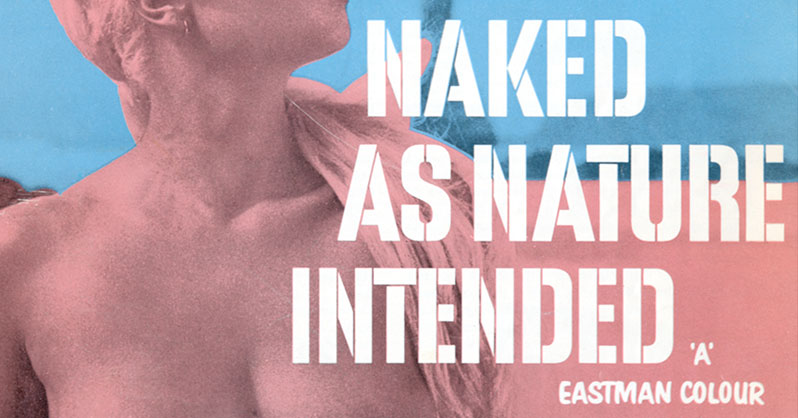
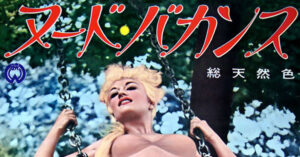
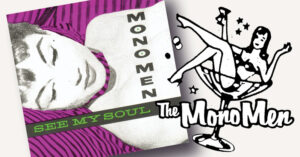
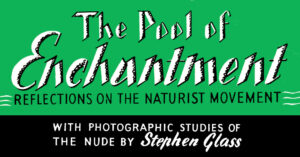
Great article. Very interesting. I remember some of those names. Frank Chacksfield. His orchestra quite often heard on Radio 2! Would like to have seen more from the films though. Love the nudity. I’ll look them up on Xhamster!